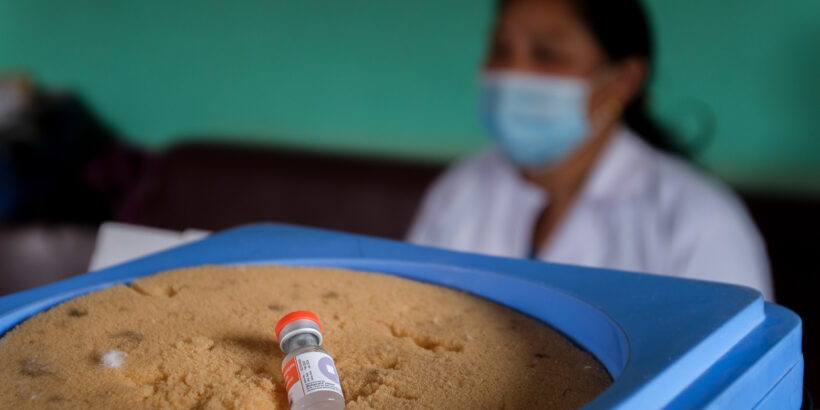Decision-makers in Gavi, the Vaccine Alliance-eligible countries have the monumental task of considering a portfolio of public health interventions and deciding which tools to prioritize for the greatest health impact. Vaccines, a cost effective investment with a proven return on health, are often considered a worthwhile investment for government leaders. Alongside other decision-making factors such as disease burden, cost of delivery data can help decision-makers understand the resources needed to effectively introduce a new vaccine.
Delivery costs help inform decision-making
When typhoid conjugate vaccine (TCV) received WHO prequalification and Gavi opened a funding window to support eligible countries with TCV introduction, it meant another vaccine eligible for routine introduction with Gavi support. While this is great news for preventable diseases, it means that policymakers, many already working through a queue of eligible vaccines, must now apply a robust set of factors to consider a new antigen. One of the most important factors for many decision-makers is the cost to deliver a vaccine. This is a particularly crucial factor for TCV given the high financial and economic cost of typhoid disease.
A recent study estimated the delivery costs of the first public sector TCV campaign in India’s Navi Mumbai municipality. The study findings offer initial data on the costs of delivering TCV in a campaign setting. They also provide decision-makers with a baseline indication of what TCV could cost their national immunization program.
First public sector TCV campaign
India is a typhoid-endemic country with one of the highest typhoid burdens in the world. Global Burden of Disease data estimates that, in 2019, there were 4.8 million typhoid cases in India. Navi Mumbai, an extension of the suburbs of Mumbai, India, conducted the first public-sector introduction of TCV from July to August 2018. The campaign sought to reach more than 159,000 children aged 9 months to 15 years. The catchment area included slum communities as well as high-rise apartments. Health care workers administered more than 113,000 TCV doses during the campaign; a result of 71% overall coverage. The socioeconomic diversity of the communities provided a real world setting in which TCV delivery costs could be measured.
The data from Navi Mumbai highlight that TCV delivery is similar to delivery costs for other routine childhood immunizations. Across 24 countries, the standard country-level delivery cost per dose of routine childhood immunization services is US$1.87. In Navi Mumbai, the cost was strikingly similar. The financial cost for TCV was US$1.87 per dose for direct expenditures on vaccines and vaccination supplies (syringes, safety boxes). The economic cost (i.e., financial costs plus the value of existing, in-kind, and donated resources, including any expenses covered by external partners) was US$2.96 per dose.
This means that TCV direct costs are around US$0.38 per dose and the economic delivery costs amount to US$1.49 per dose. However, the Navi Mumbai campaign was funded with government funds and additional private sector support. Governments in Gavi-eligible countries will pay a much lower cost per vaccine dose. Given the economic burden that illness can put on families, communities, and the health system, the low cost per dose makes vaccines, including TCV, a cost-effective way to prevent and control diseases.
Data for policy decisions
The data from the Navi Mumbai TCV campaign is the first to identify delivery costs from a public sector immunization program. The analysis provides evidence for policymakers, stakeholders, and funders to understand the per-dose TCV delivery costs in a typhoid-endemic setting. This information can help guide policymakers as they prioritize public health interventions and weigh the resources available to support such decisions.
Photo: TCV vials in a vaccine cold box facilitate delivery. PATH/Rocky Prajapati.



